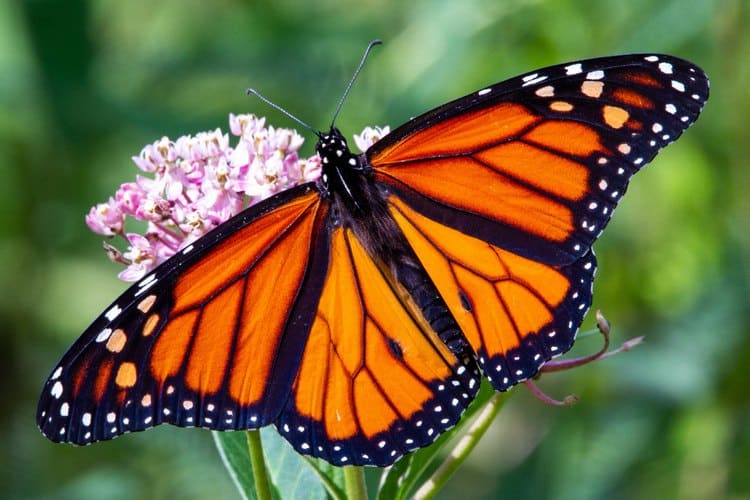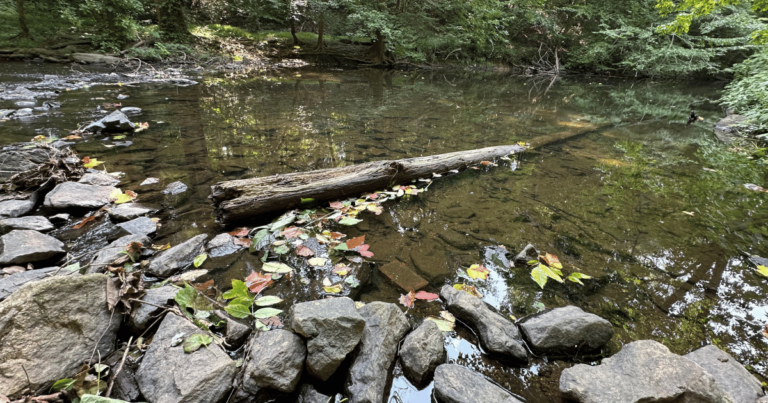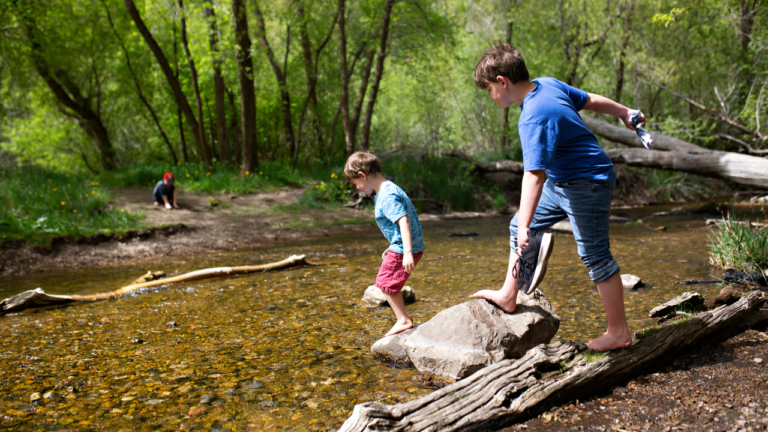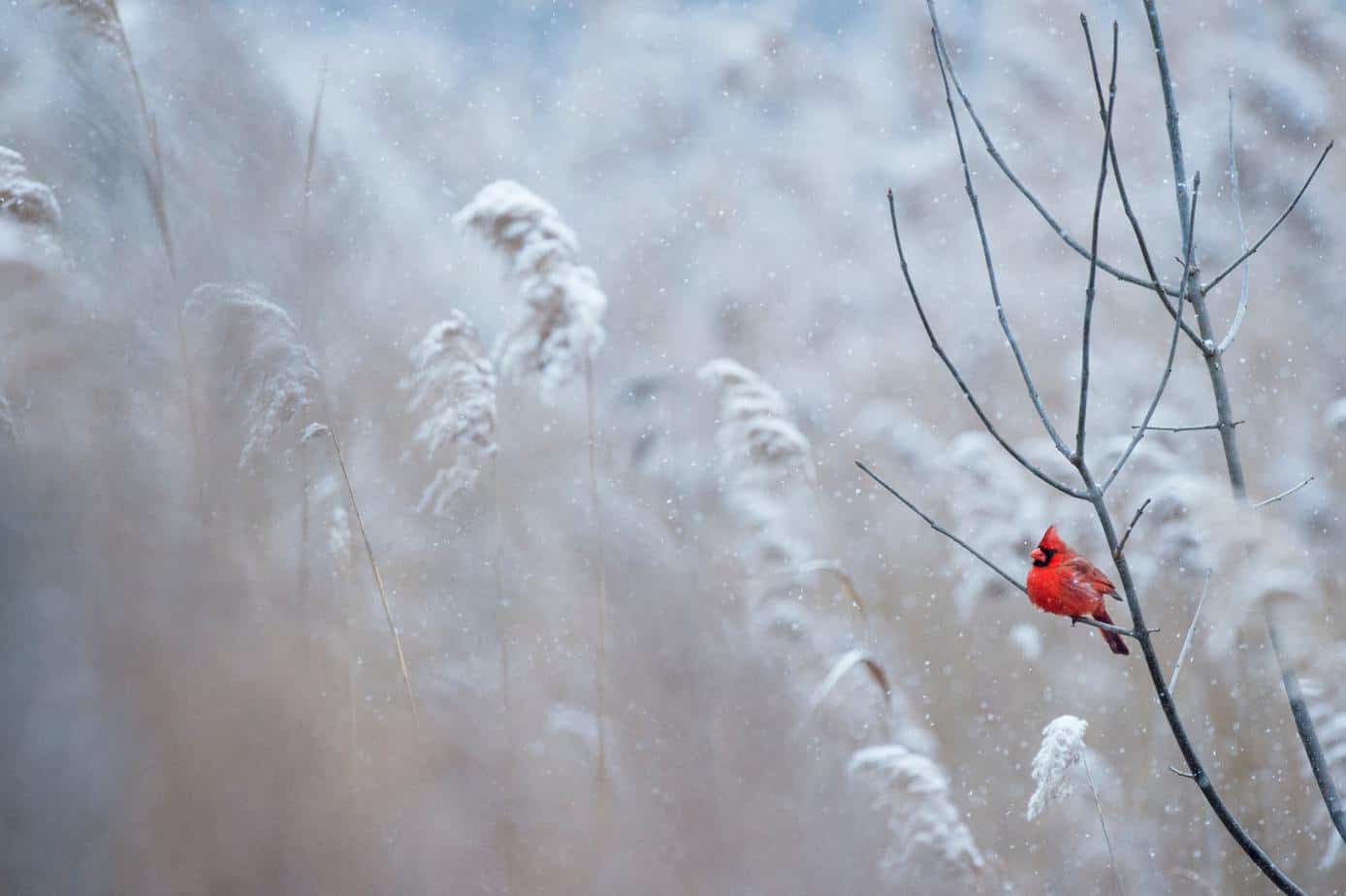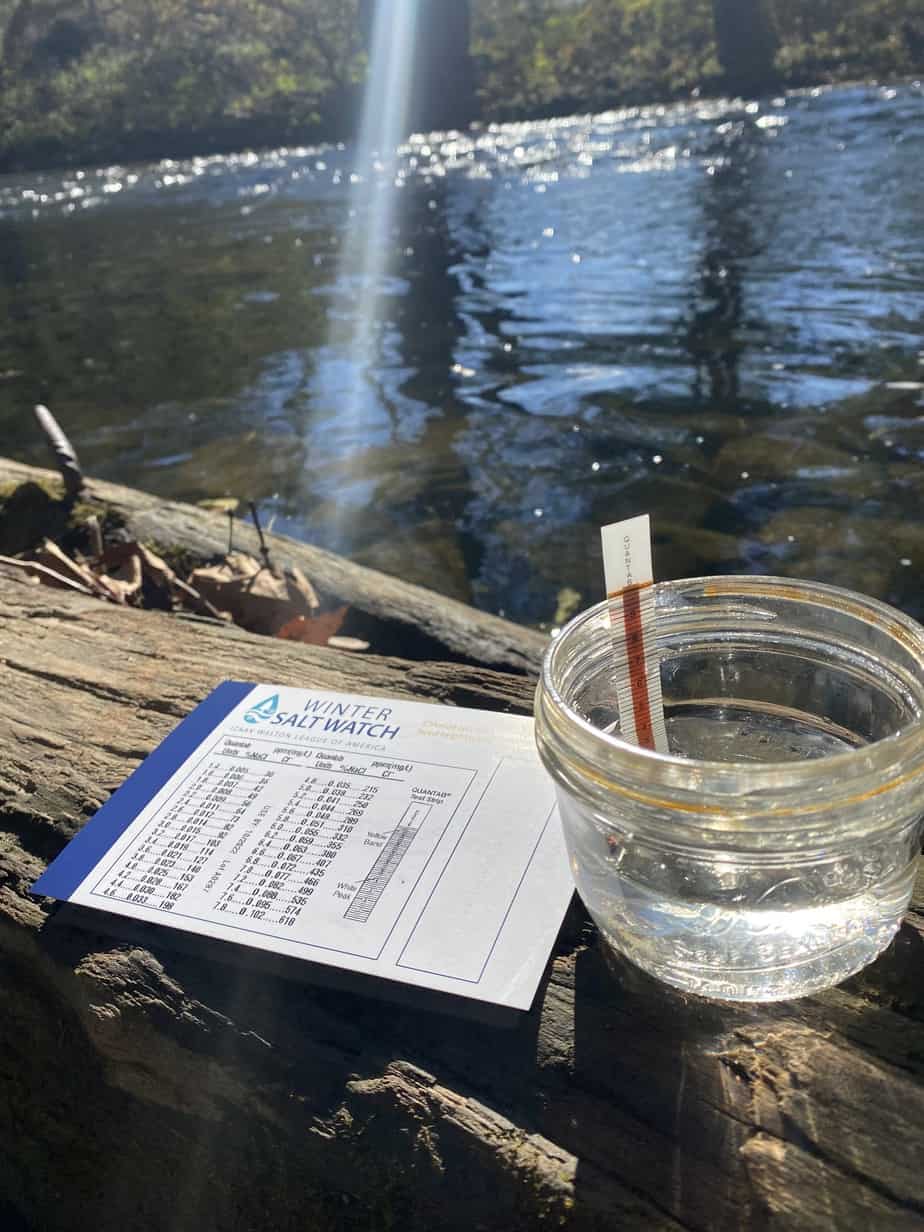Nature Study: How To Make Your Own Birdwatching Station
In this blog post, we’ll share how to make your own birdwatching station that attracts birds AND homeschoolers! Watching birds from the comfort of your own home is a great way to do nature study everyday – even during the busiest of seasons, and the coldest of weather. We hope you’ll be inspired to create your own!
Looking for more support, and done-for-you planning? We create monthly nature-focused modules centered on real world, hands-on science field trips. Check out our Field Trip Science Membership and see if we’re a good fit for your family!

Location of the Birdwatching Station:
Selecting a good location for your birdwatching station is really important. If you put it in an out of the way spot, chances are that your family will forget it even exists. So don’t do that! Choose a spot that you walk by multiple times a day if you can, even if it’s not “IG worthy”!
A room with large windows or a clear view of the outdoors is perfect for observing birds. Consider setting up the station near these windows, and ensuring that it’s a cozy spot to linger as well as providing an unobstructed view of the surrounding area.
We suggest making your bird watching spot a place to settle in to wait for birds to approach your feeder or yard. Pulling a comfy chair and side table over to the window is a great way to make the location inviting to your homeschoolers. Make sure you have all of the essential bird watching equipment close at hand and ready to grab at a moment’s notice. Birds won’t wait around for you to take your binoculars out of their case!
Setting Up a Bird Feeder:
Placing a bird feeder near the birdwatching station can attract a variety of birds for observation. Choose a location that is visible from the station and easily accessible for maintenance, but not too close to the house or to branches or trees. Both Sue and I have our bird feeders next to our decks, which allows for access and easy viewing.
Different types of bird feeders can attract different bird species. Consider setting up a variety to maximize the diversity of birds that visit. We like the “squirrel proof” varieties of bird feeders for beginner birdwatchers. Squirrels can quickly deplete the seed supply and make maintenance of the feeder quite a hassle!
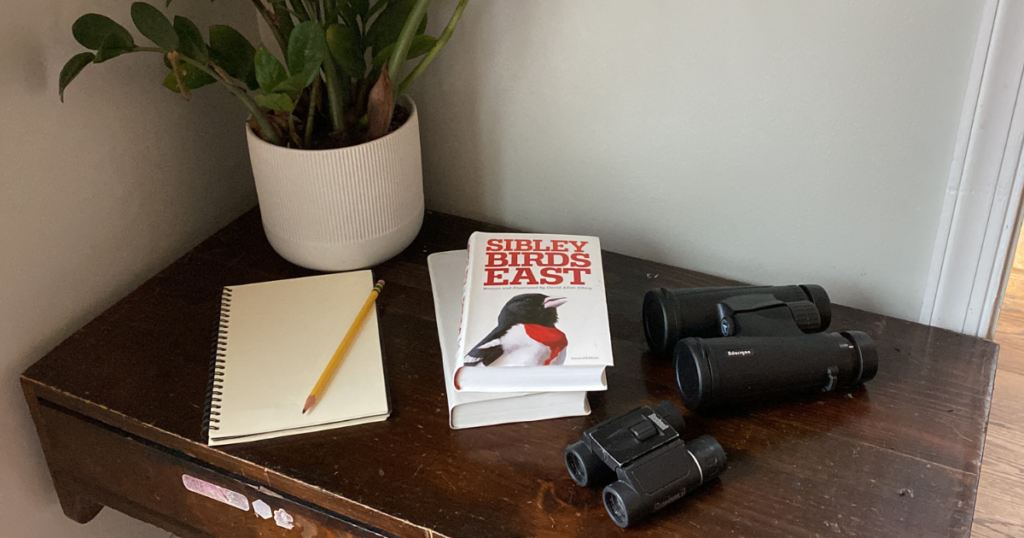
Binoculars & Field Guides:
A pair of binoculars is essential for bird watching. Opt for a pair with good optical quality and a comfortable grip. There are “compact” binoculars that will suit younger homeschoolers’ smaller hands and also be easier to manage during family outings. We have these inexpensive binoculars at our house (full size, compact). They work great for backyard birding (not affiliate links)!
Additionally, a bird identification book specific to your location can be invaluable. We live in the the eastern United States and Sibley Birds East and Peterson Field Guide to Birds of Eastern and Central North America are excellent choices for our location. If you’re not in the eastern United States like us, chances are that both Sibley and Peterson have field guides for your location too!
Smartphone Apps:
For beginner birdwatchers, smartphone apps like Merlin Bird ID and the Audubon Bird Guide can aid in bird identification through visuals and bird calls. These apps provide valuable information about bird species, their habits, and sounds, enhancing the birdwatching experience.
Teenagers especially tend to find using a bird identification app more exciting than a paper field guide. We think that leveraging technology to get hard-to-reach homeschoolers excited about nature is always a good idea! Your teen can take photos of the birds that visit your feeder, then attempt to identify them later on, either with a traditional paper field guide or a more modern identification app.
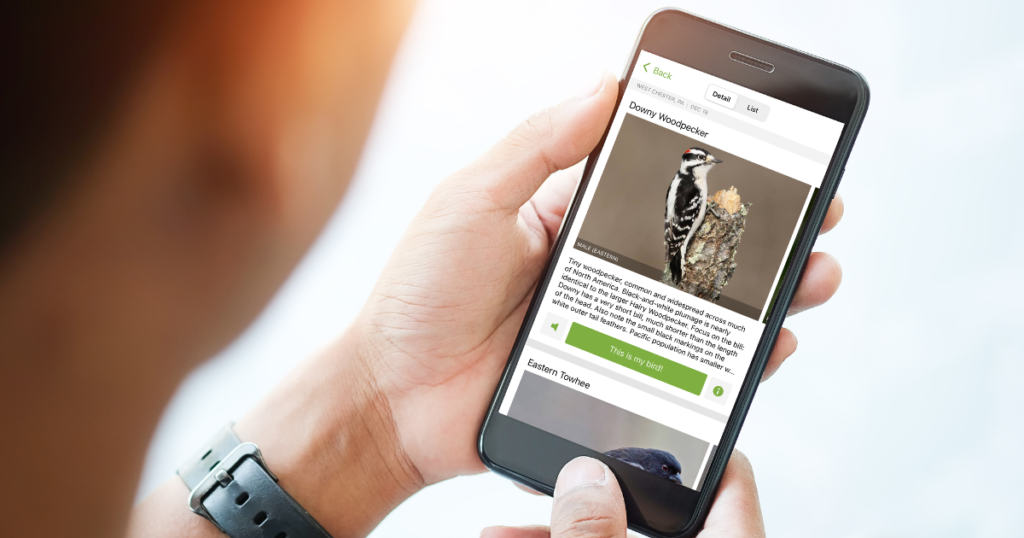
Extension Activities:
To extend the birdwatching experience, consider engaging in extension activities such as creating a bird journal to record observations. You can use either a traditional nature journal, or a birding specific journal. If you have teenagers, they can even create a birding “life list” by starting an eBird account and logging their observations in the app.
Additionally, turning birdwatching into an ongoing math lesson by creating charts of bird sightings over time can be both educational and fun family effort. You can post these visual references near your birdwatching station to keep interest high and even encourage some friendly competition.
These flashcards could be a great way to keep track of the species you see at your birdwatching station. We love the idea of a “bird wall” where you post all of the different birds you see throughout the year!
Community Science Projects:
If you’re looking for more structured birdwatching, consider participating in community science! Projects like the Great Backyard Bird Count and Project Feederwatch allow families to contribute their birdwatching data to a larger scientific database, promoting a sense of community involvement and environmental stewardship. We have a great blog post that describes a bunch of community science projects perfect for homeschooling families!
We offer monthly nature-focused modules centered on real world, hands-on science field trips. Check out our Field Trip Science Membership and see if we’re a good fit for your family!



